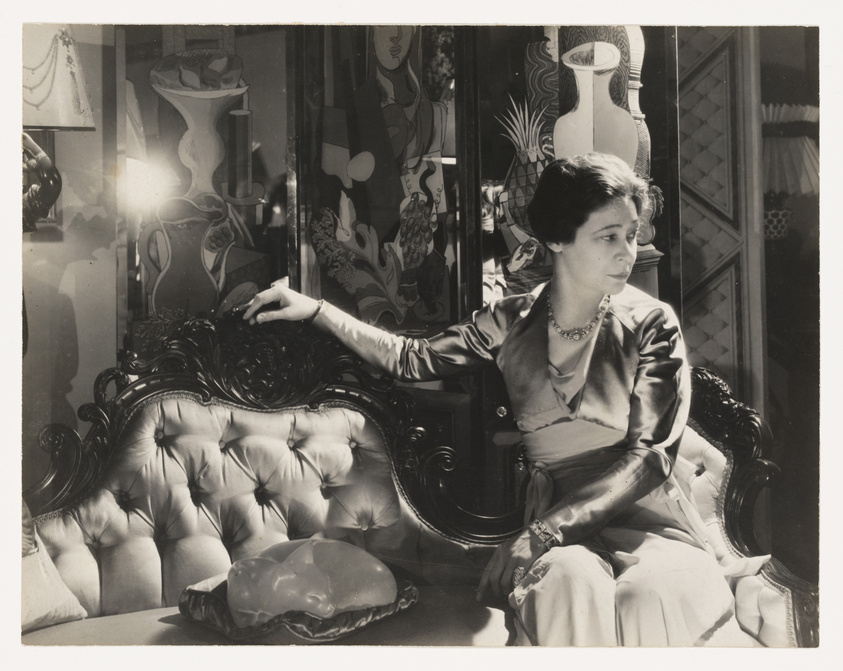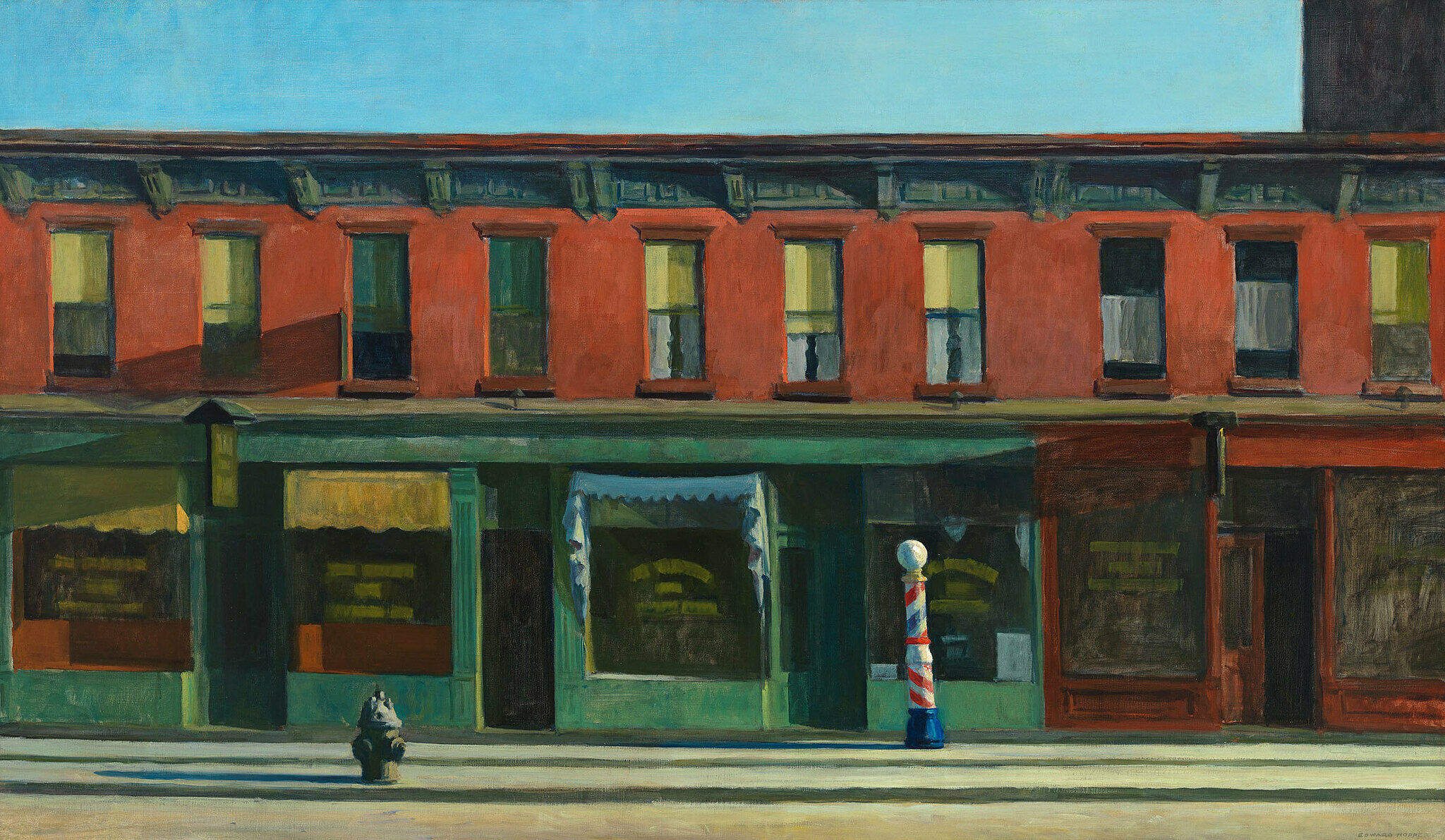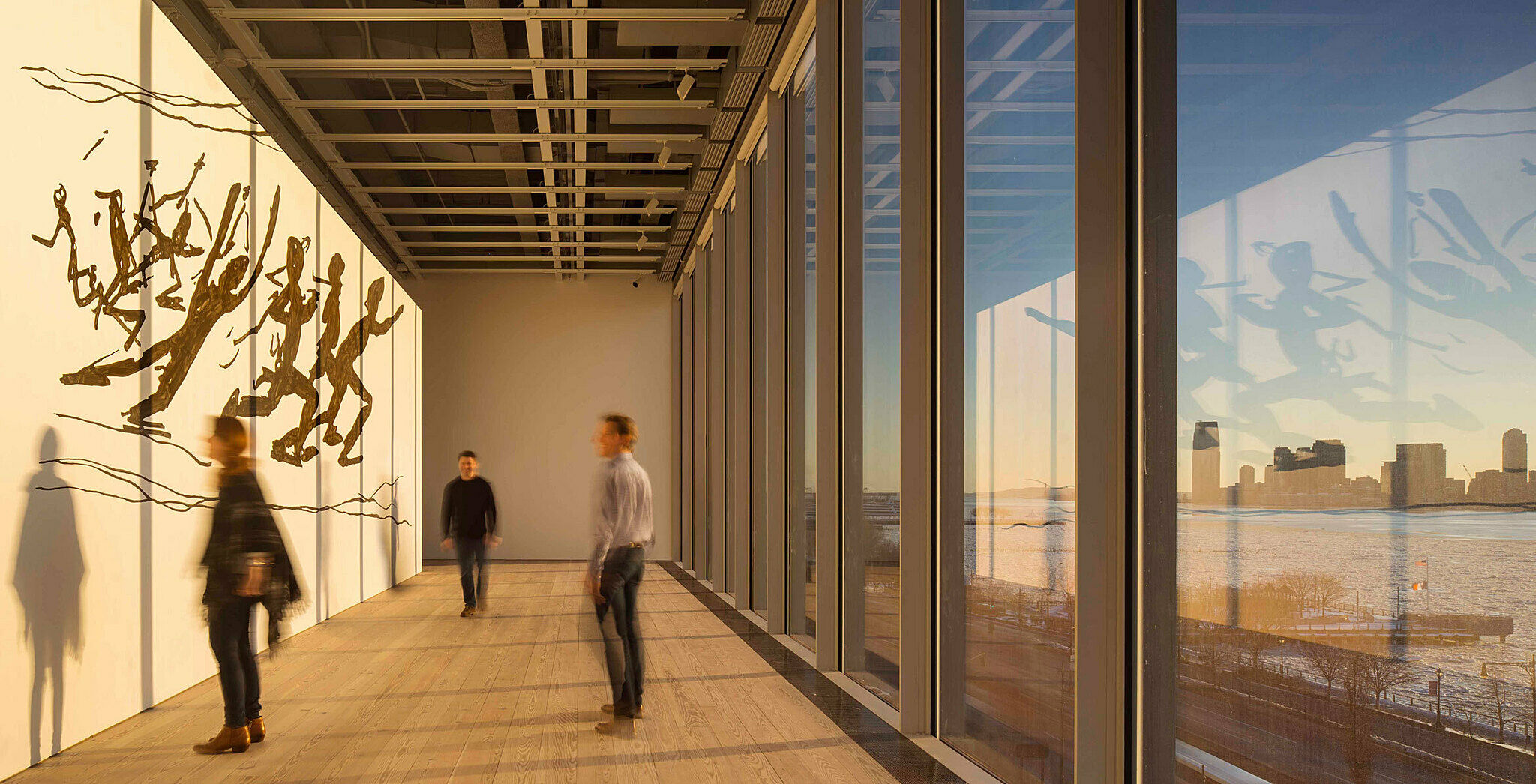Cecil Beaton’s Portrait of Juliana Force is a horizontal black and white photograph, slightly smaller than a standard composition notebook. The image shows a woman in an interior, domestic space, with artwork and other ornamental details visible behind her. A bright light illuminates the sitter and the room frontally, and reflects off of a three-paneled artwork against the back wall, creating a bright lens flare in the upper left corner of the image.
Juliana Force—dressed elegantly in a shiny gown with ruched sleeves, and in her mid-50s—sits on one end of an ornate settee, with pin-tucked upholstery and an intricate wooden frame. Her hair is pulled up, loosely but neatly out of her face, and she wears a thick collar necklace set with beads or small stones. Although her body faces the camera, her head and face are turned away, and she wears an aloof expression as she gazes at something beyond the edge of the picture plane. Her arms appear to have been positioned to imply an air of casualness; her right arm extends across the back of the settee, while the left crosses her body to rest gently on her right knee. On the settee next to Force, and in her cast shadow, a statue of a sleeping cat lies curled in on itself, with its head and face pointed in the same direction as the sitter’s.
On the far left-hand side of the image, part of a tabletop lamp sits with a light-colored shade draped with chains and a jewel-like pendant. Jagged shadows beneath it suggest the leaves of a plant, or some other angular form out of our view. Further to the right, at the center of the composition and behind the settee, painted forms decorate a pair of standing panels: a tall vase, a handled pitcher, a pineapple, and part of a woman’s face. Further to the right, close to the edge of the image, the wall behind the painted panels peeks out, revealing a triangle motif and pin-tucks that mirror the upholstery of the settee. A sliver of another room appears behind this wall, but its details fade into deep shadow, and extend beyond the image.
Juliana Force was the Whitney Museum of American Art’s first director, and this portrait of her was made as a publicity image in her sumptuous apartment, above the Museum itself. The photographer, Cecil Beaton, was known for his fashion photography. This editorial sensibility plays out in Force’s portrait through close attention to rich fabrics, ornamental details, and the gracefulness of the subject’s profile.



